Frankie Malone is an Irish artist based in Barcelona who works between stillness and motion, instinct and intention. His main medium is photography, but his practice weaves in poetry, graphic design, and whatever else feels honest in the moment—layered compositions that are abstract, emotional, and quietly powerful.
Frankie started his creative life in Dublin’s Temple Lane Studios and worked his way through publishing, design, and photography roles before landing in Barcelona—where he founded Studio 83, a creative agency that’s collaborated with cultural giants like MNAC and La Caixa. His work has been featured in La Mono, 99U, The Guardian, and The British Journal of Photography, and exhibited as far away as New Zealand.
Whether he’s creating for print, gallery walls, or hospital corridors—as in his 2024 solo show at Can Ruti—Frankie’s images feel like a slow breath in a noisy world. Thoughtful, present, and just unpolished enough to feel human.
Your work feels deeply personal and reflective. Can you take us back to the beginning —what first drew you to photography and visual storytelling, and how did that evolve into the layered, poetic practice you have today?
Escape. Realising at some early stage that surely there’s more to life than going to school, university, then a job, kids, retirement and then death. I took up photography about 18, I think, after a failed attempt at becoming a musician and poet. My first camera was an Olympus OM10, I brought it with me on my many escapades around Dublin. My first creative job was working as a desktop publisher for a place called Graphic Reproductions, then got a job working on the picture desk of a photography agency where I learnt how to edit, process and experiment! I realised quite early that I wasn’t interested in taking classic landscapes, I was drawn to things that appeared out of place or graphically compelling, the space between the matter, so to speak.
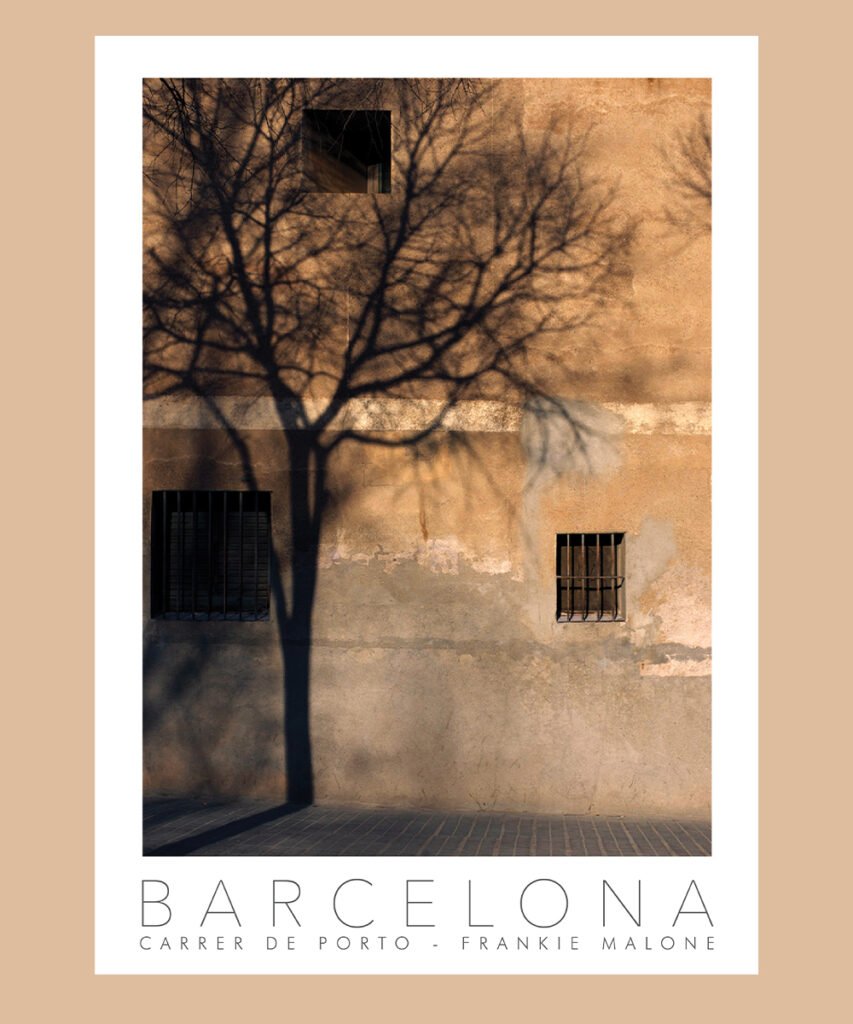
You’ve worn many creative hats over the years—graphic designer, photo editor, location manager. How have those different roles shaped the way you compose a frame or build a series?
I think they have all helped. A lot of creatives have experienced that, having to crossover many different roles out of necessity and survival. In my case I think it’s just the way I am. I like change, I get bored easily but I have had the constant of abstract photography for a large part of my life. Composing a frame is purely instinctive but my photo editing background has been a major help when it comes to building a series or editing and experimenting. What sticks out more, though, is the fact that I have met some great people who have been instrumental in helping me on my creative path. Billy, my old boss where I worked as a photo editor, my wife, a photographer and also my sister Niamh, an art director, to name a few.
“I was drawn to things that appeared out of place or graphically compelling, the space between the matter, so to speak.”
Your creative agency, Studio 83, feels more like a creative habitat than a commercial agency. What were you hoping to create when you founded it, and how has it changed the way you collaborate?
I was hoping to create a place where commercialism and creativity could coexist. It almost sounds like an oxymoron but I believe with the right collection of people and correct management of a project, it’s possible. As an artist I am a sole trader so I like the option of working with Chris and Cathy as a team, and also reaching out to other creatives when necessary…
There’s a strong undercurrent of activism in your work, often subtle, but unmistakable. How do you see the artist’s role in reflecting or responding to the challenges we face— both collectively and personally?
I think we have a responsibility of course, just like we do as humans. As Plato said ‘If you do not take an interest in the affairs of your government, then you are doomed to live under the rule of fools.‘ And I think like never before we have sleepwalked into the oligarchic nightmare we face now. At the same time I don’t think you are obliged to be an activist as an artist, I think the very fact that you are creating or producing art is in itself a form of rebellion against the robotic tendencies that a lot of us have been drawn towards. What is happening in Palestine now, for example, demands activism as our western governments are enabling genocide, not turning a blind eye but actively enabling it. A colonial project that is determined to run its course and we, the people, seem to be the only thing that can stop it, which is frightening and at the same time a challenge we have no choice but to face.
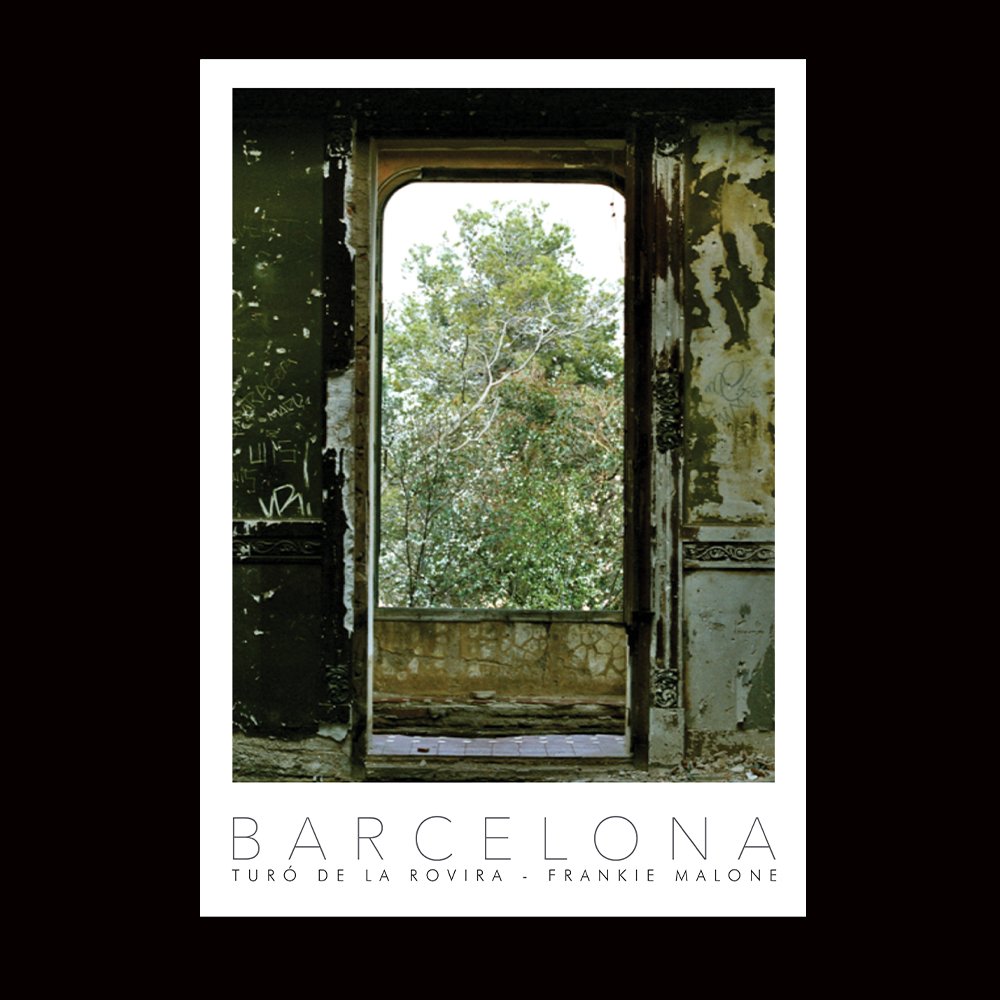
‘Barcelona Poster Series’ captures a mood that feels both grounded and dreamlike. What was the story—or feeling—you were chasing in that series?
These photos were taken in the city or surroundings over the last 23 years and I think the feeling that I chased was always freedom, living on my own terms in a new city, doing things my own way. The images were taken with no preconceived ideas, only moments and urges, walking down an alleyway because I had an urge to do so, then finding a picture. Now I have decided to collect my favourite 50 images and present them in poster form. Each image comes with the name of the street where it was taken. Images of nothing in particular, except perhaps a mood, a corner, colour and light, but always Barcelona. Dreamlike and grounded are two good words. Dreamlike fits into what my state of mind was like living here sometimes, taking images as an outsider but slowly getting to know the city more intimately as I became more grounded and assured in my new home.
“I learned a long time ago that you can’t ever retake the same picture.”
Words appear often in your visual work—not just as captions, but as part of the image itself. How do you know when a piece needs text, and when silence is enough?
Interesting question, as both a graphic designer and photographer, I do have many internal discussions about editing a photo, including whether to add text. I tend to separate two things. My photography is my spontaneous action, later to be edited or considered for text. I usually reserve text and image combinations for my posters, when I have something I feel like I actually want to say out loud. I am forever thinking of formulas and ways to crossover both but sometimes the photograph just wins, needs to be left all by itself.
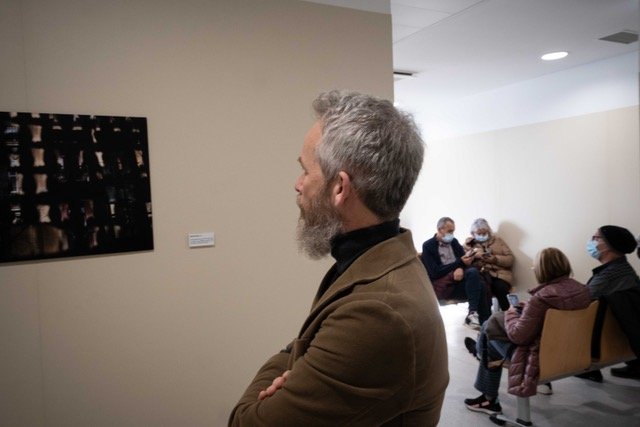
In projects like your Can Ruti hospital exhibition, art takes on a more intimate, even therapeutic role. How did that experience shift your view on where art belongs and who it’s for?
Having the exhibition in Can Ruti was special. I must say it was a pleasure working with Dr. Mesia and his team, they were so helpful and supportive. Art should be available to everyone and definitely should be more ‘public’. It was really nice to see patients and their families interacting with the pictures, being distracted from their illnesses. And we shouldn’t overlook the benefit it can have for doctors and nurses, who work under intense pressure every day. There’s research showing that art can have therapeutic and relaxing effects on patients and staff. It’s something I’d like to explore more in the future. It has definitely solidified my view that art is like music, it can be therapeutic, challenging, thought provoking, calming and distracting among other things. Art, music, dance, theatre, literature. These are our great achievements, what makes us special, what separates us from our Neanderthal past, but we need to care for them with all of our resources and with all of our strength.
“Art, music, dance, theatre, literature. These are our great achievements, what makes us special, what separates us from our Neanderthal past, but we need to care for them with all of our resources and with all of our strength.“
You’ve mentioned being drawn to overlooked or transitional spaces. Is there a particular corner of Barcelona (or beyond) that continues to pull you back creatively?
The vast majority of my photography is completely spontaneous. I learned a long time ago that you can’t ever retake the same picture.The energy, light, time and vibe are never the same. All the neighbourhoods have the same potential, because at the end of the day for me it’s all about energy, circumstance, coincidence and being in the right place at the right time. That said, I am probably drawn to my own ‘barrio’ of Carmel or Turó de Rovira, as it’s where I have lived for 20 years. There is a beautiful energy there and my home is where I feel the most connected.
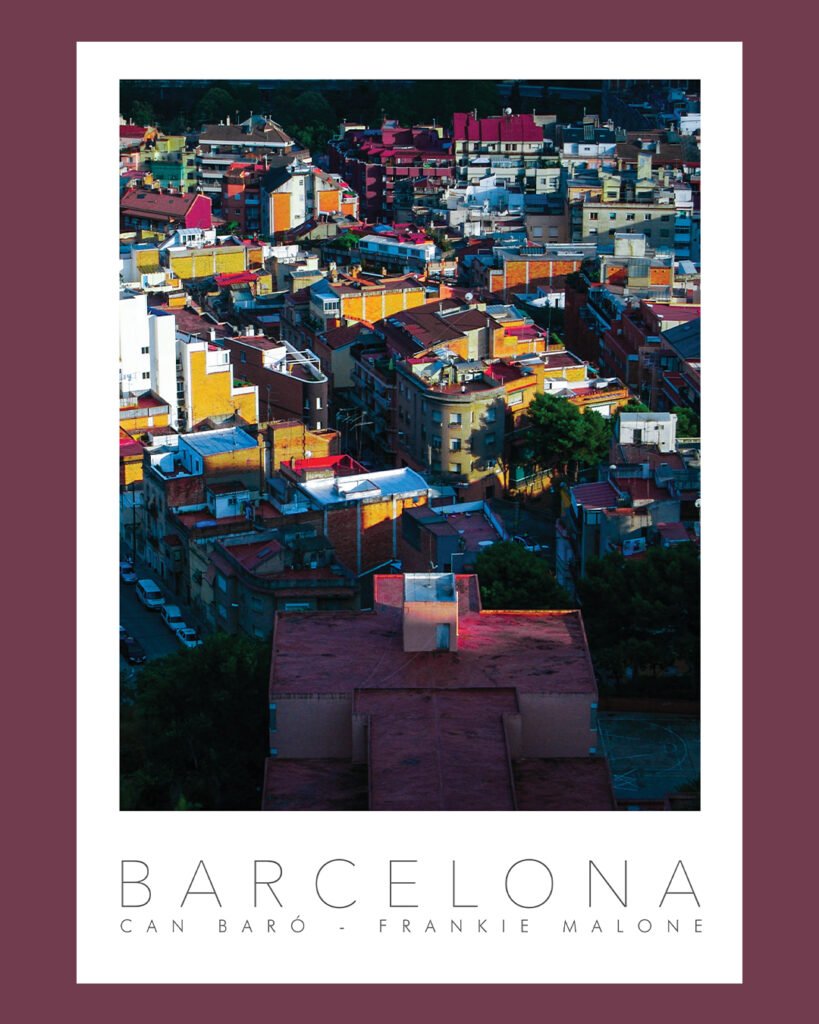
In a time when AI and fast content are redefining visual culture, what do you think we need to protect or preserve in how we make and share images?
We need to protect our ability to create. Creativity is like meditation, the most important thing is that we practice it. We need to encourage people of all ages to create, whether that’s writing, playing music, performing, cooking, drawing, carpentry etc. In a perfect world, AI would be an absolute godsend, everyone could work less and spend more hours discovering themselves through creating, meditation, exercise and spiritual practice. I think AI will run its course and cause damage but maybe it will also be the catalyst that encourages people to return to nature and to a life away from technology. This could be how we can preserve the realm of creativity, stepping outside of AI, returning to creation for no return.
Finally, what’s next? Are there new stories, mediums, or places calling to you right now—or are you sitting with stillness for a while longer?
Sitting with stillness is something I can only really do when I practice meditation, otherwise I never stop thinking and doing. I am always working on projects or ideas, most of them never see the light of day. My new Barcelona Poster Series is something I am about to start promoting. I would also love to bring more art into hospitals, whether it be mine or other artists. I think art in hospitals is something I could see myself dedicating time to. Outdoor installations also interest me a lot. I will also have an exhibition early next year in La Tintoreria in Vic, which I’ll need to start preparing for soon. It’s a great space, run by great people, so it will be exciting to have a blank canvas to showcase my work. I have an increasing urge to paint on my pictures…..maybe I’ll do that next…..
Big thanks to you, Frankie, for sharing your time, reflections, and way of seeing the world with all of us. Readers can learn more about Frankie at his website, frankiemalone.com and @barcelonabreeze


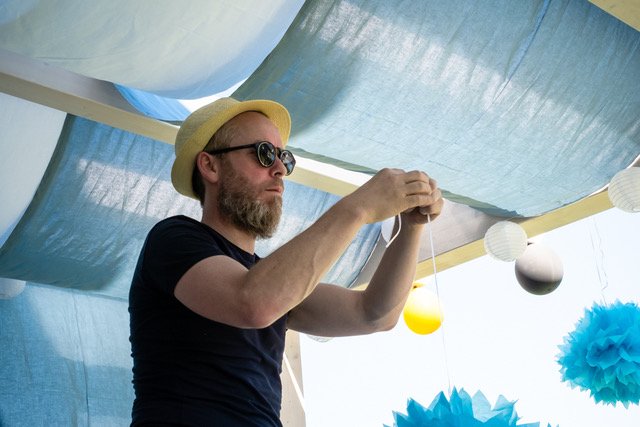
Thanks for your interest in art & creativity on FrikiFish— a one-woman labor of love, providing free content and services to artists, art-lovers and creative projects in-and-around Barcelona. This project runs on caffeine and community love, please consider supporting with a donation or a cup of coffee. Thank you!